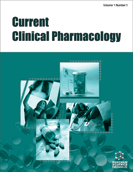Abstract
The liver plays an essential role in metabolic management, and
detoxification associating the metabolisms of toxins, lipids, alcohols, carbohydrates
and various drugs. It also plays a role in the immune response. However, some
conditions, such as viral infections (hepatitis), inflammation, continuous liquor
consumption, periodic use of antibiotic-related drugs, and non-alcoholic fatty liver
illness, can produce free radicals and cytokines, enhance lipid peroxidation, and induce
damage to hepatocytes. Hepatoprotective agents are often the treatment of choice to
improve liver function and protect the liver from exposure to harmful compounds.
Based on scientific reports, Silybum marianum, Moringa oleifera, Garcinia
mangostana, Glycyrrhiza glabra, Mangifera indica, Amaranthus spinosus,
Andrographis paniculata, Phyllanthus species (amarus, niruri, emblica), Curcuma
species (longa, xanthorrhiza, manga), and Citrus species (aurantium, sinensis, unshiu,
grandis) have been broadly administered for the liver ailments therapy through
antioxidant-associated abilities. Impressive studies have exposed that the health-promoting outcomes of bioactive constituents derived from plants have often been
applied to their antioxidant characteristics and raise the cellular antioxidant protection
system, scavenge free radicals, suppress lipid peroxidation, stimulate anti-inflammatory
capacity, and assure the liver from destruction. These compounds are chlorogenic acid,
curcumin, quercetin, hesperidin, rutin, betalains, apigenin, silymarin, phyllanthin,
mangiferin, α-mangostin, bellidifolin, ginsenosides, glycyrrhizin, lycopene, and
andrographolide.
Keywords: Clinical study, Flavonoids, Hepatoprotective, Human & health, In vitro, In vivo, Lignan, Phenolics, Saponin, Terpenoid, Xanthone.






















